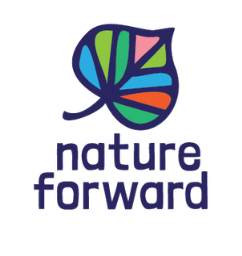Join Audubon Naturalist Society (ANS) to see and learn about its new and innovative tree-safe rain garden that reduces flooding and is a model for good environmental living
For Immediate Release – October 4, 2017
For more information contact [email protected] or call 301-652-9188 x 23
Chevy Chase, MD – How do you help prevent stormwater pollution and flooding that can lead to home damage? You build a lot of rain gardens, like the innovative “tree-safe” one ANS will unveil on October 13, 2017.
How rain gardens help
After a hard rain, many areas flood because they’re covered with pavement that can’t absorb the excess water. That standing water collects debris, oil, fertilizer, and other dirty, often toxic, stuff and “whooshes” down streets, causing problems like pollution and erosion to our roads, homes, businesses, rivers and streams. Rain gardens capture the rain shortly after it falls, before it wreaks havoc, and recycle it in a way that doesn’t harm the human and natural community.
How homeowners can get money to install rain gardens
Most of the counties and cities in our region also provide financial incentives – rebates worth hundreds or even thousands of dollars– to homeowners and institutions who install certain types of rain gardens and other projects to manage polluted runoff.
Aren’t trees already safe in rain gardens?
Unlike traditional rain gardens, which capture rain runoff in deep pits filled with gravel, our innovative tree-safe rain garden holds the water above ground in temporary ponds. By using this technology, we didn’t have to dig underground and disturb mature tree roots.
Washington, D.C. and other major cities have used rain gardens for years to help manage polluted storm water runoff, which is the only growing source of pollution to the Chesapeake Bay. ANS opted for a tree-safe rain garden because its design is cutting-edge and tree-friendly and allows us to showcase this innovative technology at our Woodend Sanctuary and share the value of tree-safe rain gardens to the wider community.
During the unveiling, you’ll see firsthand how the tree-safe rain garden works, and how homeowners and institutions can use elements of its design in their own yards to manage runoff. You’ll also hear how Audubon Naturalist Society is embarking on our 50-year Master Plan to restore native habitat and biodiversity to our Woodend Sanctuary.
What: Woodend Tree-Safe Rain Garden Ribbon Cutting
Date: October 13, 2017
Time: 10:00 am – 11:30 am
Location:
Woodend Sanctuary
8940 Jones Mill Road
Chevy Chase, MD 20815
Funding for the tree-safe rain garden was provided through the Montgomery County Water Quality Protection Fund, EPA Region 3 and the Chesapeake Bay Trust. Other funders include the Wallace Genetic Foundation and the Cornell Douglas Foundation. The rain garden was designed by the Center for Watershed Protection and installed by Environmental Quality Resources, LLC.
# # #
About ANS: ANS is the oldest, independent environmental organization in the DMV. Throughout its history, ANS has played a pivotal role in conserving our region’s iconic natural places from development including the C&O Canal, Dyke Marsh and most recently Ten Mile Creek. Past ANS member and board president, Rachel Carson, author of Silent Spring, is credited with launching the now global environmental movement. ANS’s nature experts provide hundreds of opportunities each year for children and adults to enjoy, learn about, and protect the environment.
Learn more about ANS here: www.anshome.org, www.Facebook.com/Audubon Naturalist SocietyNaturalistSociety, and www.Twitter.com/ANStweets
